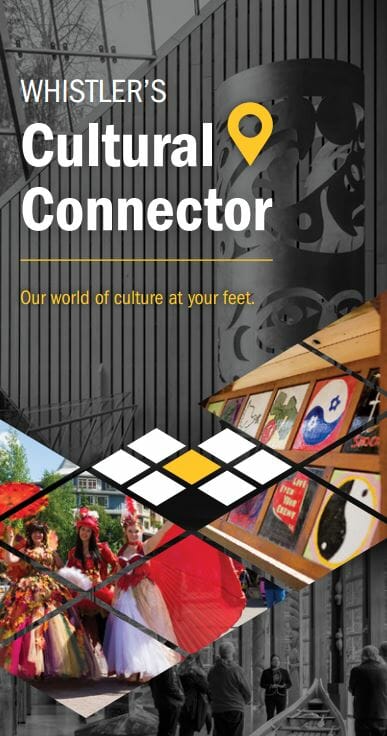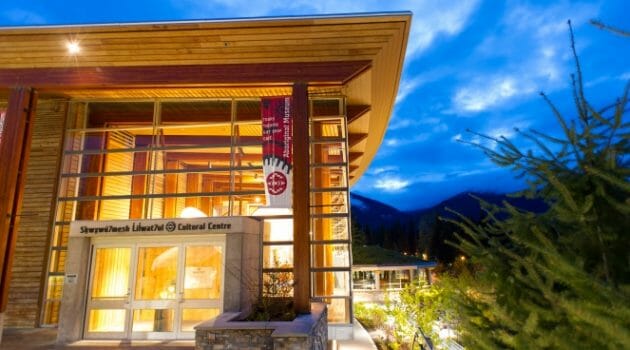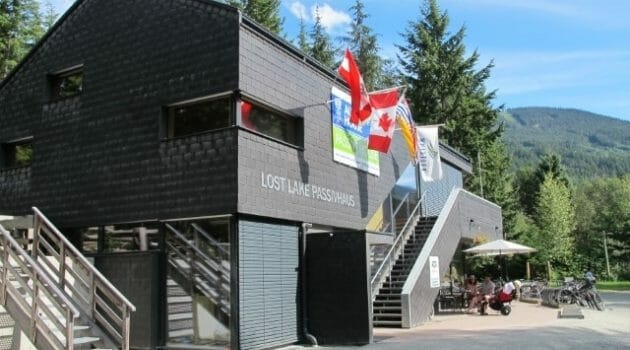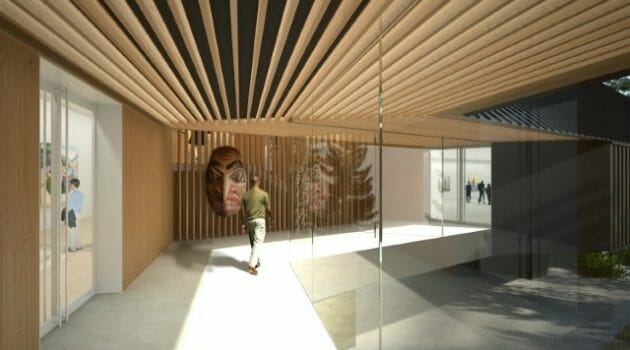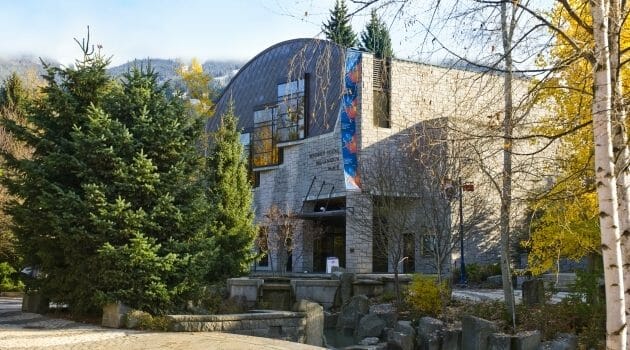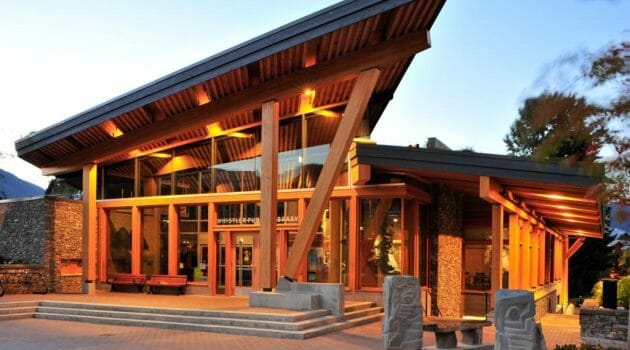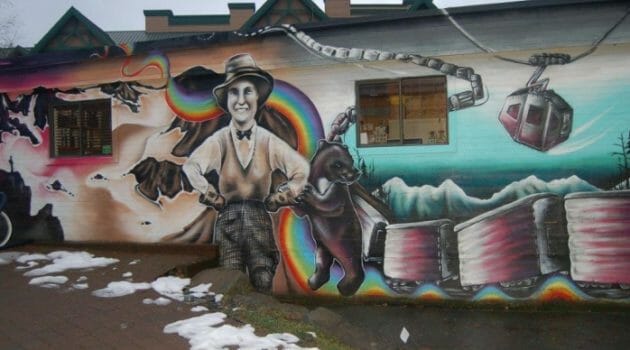First Nations, pioneers, adventurers, visionaries, free spirits, makers and creators. Behind Whistler’s majestic mountain backdrop are the cultural stories of people who settled here and shaped the resort into what it is today.
The Cultural Connector is a scenic pathway through Whistler Village and the Upper Village that links six cultural institutions in Whistler and identifies noteworthy points and anecdotes. It is a chance to learn about the community’s cultural evolution over time.
A printed brochure and map that outlines the Cultural Connector route is now available. Pick up a copy at any of the Village Host booths, the Visitor’s Centre, or any of the six facilities along the route.
Explore the Cultural Connector Institutions
Squamish Lil’wat Cultural Centre
We, the Squamish and Lil’wat people, proudly invite you to learn about our cultures at the Squamish Lil’wat Cultural Centre. This is the traditional territory of our people—our history and culture are deeply connected to it. Come and hear our stories and see the mountains, rivers, and forests through our eyes.
Lost Lake PassivHaus
Accessed from the Valley Trail, Lost Lake PassivHaus was the home base of Team Austria during the 2010 Olympic Winter Games and was donated by the Austrian Passive House Group to the community afterward. A model for sustainable design, the Lost Lake PassivHaus is now a four-season day lodge, café, cross-country. Learn more.
Audain Art Museum
Opened in winter 2016, the Audain Art Museum shares one of the world’s finest collection of First Nations masks, a superb collection of Emily Carr paintings, works by some of Canada’s most internationally regarded contemporary artists such as Jeff Wall, Rodney Graham, Robert Davidson, Brian Jungen and Xwalacktun Harry, and changing temporary exhibitions.
Maury Young Arts Centre
The Maury Young Arts Centre welcomes everyone to enjoy its community art gallery, theatre, and youth centre. Visit this vibrant hub to see an exhibit and leave with a packed diary of creative classes and live entertainment. Located at the heart of The Village, the Arts Centre is the pulse of arts and culture in Whistler and home of Arts Whistler.
Whistler Public Library
Founded in 1985, Whistler Public Library is one of the busiest libraries in the province. The library’s lauded green design and unique timber-framed structure blends into its natural surroundings. Since opening the new building in January 2008, the library has become a community hub for locals, visitors, and seasonal workers. Approximately 800 people per day make themselves at home in “Whistler’s Living Room”.
Whistler Museum
Whistler Museum tells Whistler’s many stories, ranging from fun-loving pioneers, to the development of skiing in the area and the 2010 Olympic and Paralympic Winter Games. With entry by donation, explore the Museum’s activity books for kids, a trunk of costumes and artifacts, and interactive exhibits—including the chance to snap photos with a real Olympic torch. Its natural history showcase includes information on Whistler’s most famous non-human resident: black bears.
The project is supported by the Province of British Columbia’s Resort Municipality Initiative and the Government of Canada.

Contact
Resort Experience
resortexperience@whistler.ca

